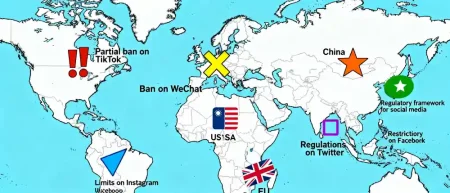The first half of 2025 has belonged to memecoins
Think of it: In May 2025, Trump’s meme coin soared after he asked the top 220 holders to dinner. In the same month, the price of the Grok memecoin surged when Elon Musk changed his name on Twitter/X to ‘Gorklon Rust’ — no, we aren’t joking.
Then there are innumerable articles that tell people how to start their own memecoins, and even Silicon Valley wants to get on the memecoin frenzy train. However, the most interesting piece of information came through in July 2025, when a study by NFTEvening revealed that memecoin is 2025’s only profitable crypto sector. They might have been dismissed as a joke, but memecoins have achieved what other market segments have been dreaming of this year, and that too at a time when many memecoins have died out.
Can the memecoin sector mature beyond its current role of speculation and deliver real-world and sustainable value?

The Idea: Get Rich Quick
Memecoins are “playful cryptocurrencies” in a way, drawing inspiration from internet humour and culture. Their origins can be traced back to 2013 when Dogecoin was launched as a light-hearted take on the popular Doge meme. While considered a joke in the beginning, what propelled the crypto into the limelight was its community-driven approach as well as endorsements from high-profile people like Elon Musk.
In fact, it paved the way for the success of a host of other memecoins, such as Pepe and Shiba Inu. Today, there are more memecoins than one can remember, including the Trump coin, Pengu, and — believe it or not — even a “Fartcoin.”
So, how is it that a bunch of random words that sound like jokes have actual market capitalisations? The answer: capitalising on viral internet culture. Speculative investors were attracted to the idea of affordable investments for potentially swift and large gains, even if there are tremendous risks.
Moreover, memecoins have appealed immensely to the younger generations, who are always seeking alternative financial opportunities. And when you combine financial opportunities with viral internet culture and entertainment, it’s a match made in heaven.
Another reason why people began turning towards memecoins is the fact that they’ve become cultural symbols. They’ve ended up creating communities where purchasing a token could represent belonging, identity, and even support for a larger cause. This ensured that the spotlight remained on them, driving their popularity and their promise of financial gains even higher.

Salary in Memecoins?
One arena in which these light-hearted tokens have made strides is the least unexpected: payroll. Ever since the popularity of memecoins came to the fore, finance managers in crypto startups have been trying to find the sweet spot between reward and risk in this unpredictable market by adjusting their playbooks. They’re looking for diversified strategies that include some promising memecoins, especially those that have innovative applications and robust communities at their core.
As the concept of crypto payroll gains traction, this change in strategy aligns well with that notion. In fact, many startups are considering catering to a younger workforce that’s more welcoming of digital assets by weaving memecoins into payroll contracts. Enterprises can boost worker loyalty and happiness by allowing employees to receive a portion of their remuneration in memecoins, placing themselves at the cutting edge of blockchain evolution at the same time.

The Larger Digital Asset Market
Let’s be serious: there’s a huge difference between swift, immediate gains and creating long-term value and wealth. That’s why the debate over whether cryptocurrency markets are “casinos” of a kind and whether digital assets could ever be valuable financial innovations is a never-ending one. At the centre of that argument is the assertion to clearly distinguish memecoins and other digital assets, including stablecoins, tokenised real-world assets, and even crypto like Bitcoin and Ethereum.
Understanding this distinction is crucial for regulators, enterprises, and investors, as mixing the two, or worse, merging them as one, could lead to misconstruing the role of blockchain tech in finance. After all, crypto isn’t monolithic, and while some parts of the industry might look like speculation dens, there are others laying the groundwork for legit financial innovation. And cryptocurrency’s social layer is currently being shaped disproportionately by the memecoin culture, which comes with its own set of challenges.
There are also other effects. As memecoins consume social attention, they’re pulling liquidity away from actual foundational projects. They tend to struggle to scale, hire, and even raise funding, not because they aren’t building value, but because the dopamine loop of memecoins is crowding them out.
What’s not helping is that there’s a sharp erosion of boundaries between meme-driven enjoyment and cultural insensitivity, with tokens referencing disturbing figures, racial slurs, and tragic real-world events also entering the market. It’s not just about it being offensive — it’s about the kind of precedent the popularity of such memecoins sets, and the kind of market behaviour it normalises. Is liquidity simply chasing noise, in this case?

What Lies Ahead?
The question of whether memecoins have a viable future or not comes at a crucial juncture, with the crypto market akin to a high-speed content economy where outrageous ideas win — even if for a moment. Memecoins aren’t inherently bad, as they might be the first touchpoint for many investors later exploring DAOs (Decentralised Autonomous Organisations), DeFi (Decentralised Finance), and more. However, they need to evolve beyond memes to long-term products that reward value and not just virality.
The memecoin mania showcases what crypto is good at — viral coordination, permissionless expression, and swiftness — but what we also need are principles, filters, regulation, security, and leadership that will guide them toward possibly productive ends.
In case you missed:
- Memecoins: Scheme-Coins Or Valuable Digital Assets
- A Beginner’s Guide to Cryptocurrency Trading in India – Part 2
- A Beginner’s Guide to Cryptocurrency Trading in India – Part 1
- Are Cryptocurrencies Becoming an Asset Class?
- Let The Games Begin: All About Crypto Gaming
- Here for the ‘Pi’: Pi Day 2 Updates for the Cryptocurrency
- Tokenization of Real-World Assets: Assets Going Digital?
- NFTs vs. RWA Tokenization – The Future of Digital Asset Ownership
- Should I Use An Anonymous Crypto Wallet?
- Crypto Heists: How To Keep Your Cryptocurrency Safe?










